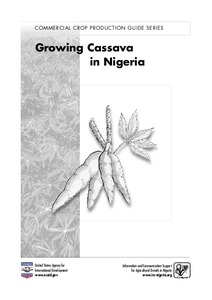| dc.contributor.author | Boukar, O. |
| dc.contributor.author | Kong, L. |
| dc.contributor.author | Singh, B.B. |
| dc.contributor.author | Murdock, L. |
| dc.contributor.author | Ohm, H.W. |
| dc.date.accessioned | 2019-12-04T11:23:46Z |
| dc.date.available | 2019-12-04T11:23:46Z |
| dc.date.issued | 2004 |
| dc.identifier.citation | Boukar, O., Kong, L., Singh, B.B., Murdock, L. & Ohm, H.W. (2004). AFLP and AFLP-derived SCAR markers associated with Striga gesnerioides resistance in cowpea. Crop Science, 44(4), 1259-1264. |
| dc.identifier.issn | 0011-183X |
| dc.identifier.uri | https://hdl.handle.net/20.500.12478/4146 |
| dc.description.abstract | Cowpea, Vigna unguiculata (L.) Walp., is an important grain legume grown in tropical and subtropical regions, primarily Africa. The parasitic weed Striga gesnerioides (Willd.) Vatke is one of the most important constraints to cowpea production. Host plant resistance is the only practical control method. Five virulence genotypes (races) of S. gesnerioides have been identified in different regions of Africa. Several host resistance genes have also been identified that are effective against specific races of S. gesnerioides The rapid spread of this parasitic weed creates an urgent need for cowpea varieties with multiple resistance genes. A recently identified cowpea breeding line, IT93K-693-2, has resistance to all known races. The objective of this research was to develop DNA markers that are useful for marker-assisted selection (MAS) in breeding cowpea for resistance to S. gesnerioides An F2 population developed from the cross between IT93K-693-2 and the susceptible cultivar IAR1696 was characterized for resistance against race 3 of S. gesnerioides for genetic analysis and molecular mapping. IT93K-693-2 was found to have a single dominant gene for resistance. Four amplified fragment length polymorphism (AFLP) markers, designated E-ACT/M-CTC115, E-ACT/M-CAC115, E-ACA/M-CAG108 and E-AAG/E-CTA190, were identified and mapped 3.2, 4.8, 13.5 and 23.0 cM, respectively, from Rsg1, a gene in IT93K-693-2 that gives resistance to race 3 (or Nigerian strain) of S. gesnerioides The first two markers were validated in a second F2 population developed from crossing the same resistant parent with ‘Kamboinse local’, a different susceptible cultivar. The AFLP fragment from marker combination E-ACT/M-CAC, which is linked in coupling with Rsg1 was cloned, sequenced, and converted into a sequence characterized amplified region (SCAR) marker named SEACTMCAC83/85, which is codominant and useful in breeding programs. |
| dc.language.iso | en |
| dc.subject | Cowpeas |
| dc.subject | Striga Gesnerioide |
| dc.subject | Aflp |
| dc.title | AFLP and AFLPderived SCAR markers associated with Striga gesnerioides resistance in cowpea |
| dc.type | Journal Article |
| dc.type | Journal Article |
| dc.description.version | Peer Review |
| cg.contributor.affiliation | Purdue University |
| cg.contributor.affiliation | International Institute of Tropical Agriculture |
| cg.coverage.region | Africa |
| cg.coverage.region | West Africa |
| cg.coverage.country | Nigeria |
| cg.isijournal | ISI Journal |
| cg.authorship.types | CGIAR and advanced research institute |
| cg.iitasubject | Cowpea |
| cg.accessibilitystatus | Limited Access |
| local.dspaceid | 99712 |
| cg.identifier.doi | https://doi.org/10.2135/cropsci2004.1259 |

